Reign c. 1312–37 (25 years) Issue Maghan Musa House Keita Dynasty Successor Maghan Musa Father Faga Laye Parents Faga Laye | Died c. 1337
Unknown Name Musa of Siblings Suleyman Spouse Inari Kunate Predecessor Abu Bakr II Children Maghan I | |
 | ||
Similar People Sundiata Keita, Ibn Battuta, Sonni Ali, Askia Mohammad I, Abu Bakr II | ||
Mansa musa and islam in africa crash course world history 16
Musa Keita I (c. 1280—c. 1337) was the tenth Mansa, which translates as "sultan" (king), "conqueror", or emperor of the wealthy West African Mali Empire. At the time of Musa's rise to the throne, the Malian Empire consisted of territory formerly belonging to the Ghana Empire in present-day southern Mauritania and in Melle (Mali) and the immediate surrounding areas. Musa held many titles, including Emir of Melle, Lord of the Mines of Wangara, Conqueror of Ghanata, and at least a dozen others. It is said that Mansa Musa had conquered 24 cities, each with surrounding districts containing villages and estates, during his reign. During his reign Mali may have been the largest producer of gold in the world at a point of exceptional demand. One of the richest people in history, he is known to have been enormously wealthy; reported as being inconceivably rich by contemporaries, "There’s really no way to put an accurate number on his wealth" (Davidson 2015).
Contents
- Mansa musa and islam in africa crash course world history 16
- Nomenclature
- Lineage and accession to the throne
- Islam and pilgrimage to Mecca
- Later reign
- Construction in Mali
- Economy and education
- Death
- References
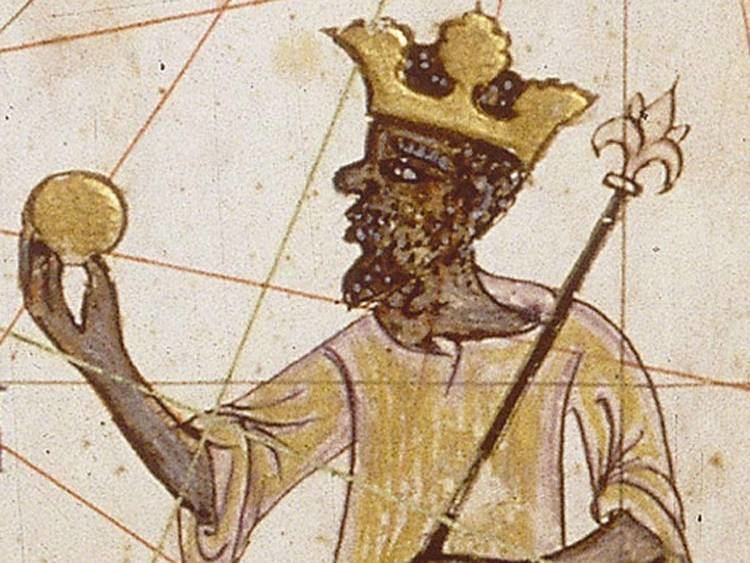
Nomenclature
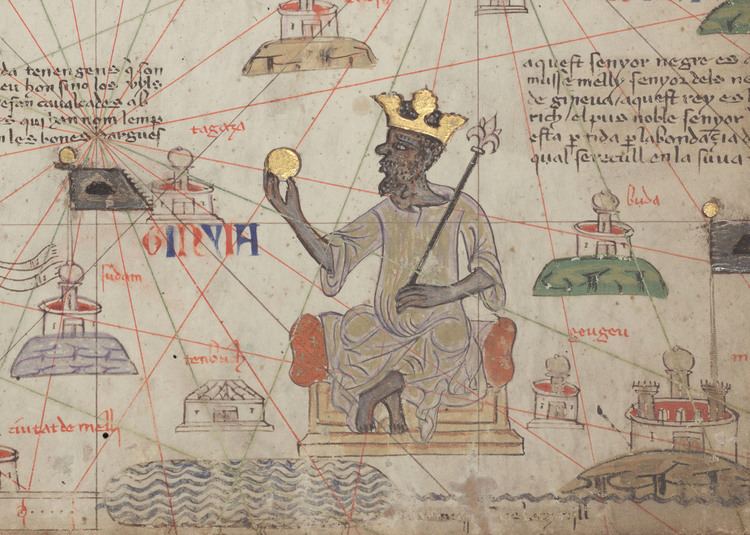
Musa Keita was referred to (and is most commonly found as) Mansa Musa in Western manuscripts and literature. His name also appears as Kankou Musa, Kankan Musa, and Kanku Musa. ‘Kankou’ is a popular Manding female name, thus Kankou Musa reads "Musa whose mother was Kankou".

Other alternatives are Mali-koy Kankan Musa, Gonga Musa, and the Lion of Mali.
Lineage and accession to the throne

What is known about the kings of the Malian Empire is taken from the writings of Arab scholars, including Al-Umari, Abu-sa'id Uthman ad-Dukkali, Ibn Khaldun, and Ibn Battuta. According to Ibn-Khaldun's comprehensive history of the Malian kings, Mansa Musa's grandfather was Abu-Bakr Keita (the Arabic equivalent to Bakari or Bogari, original name unknown − not the sahabiyy Abu Bakr), a brother of Sundiata Keita, the founder of the Malian Empire as recorded through oral histories. Abu-Bakr did not ascend the throne, and his son, Musa's father, Faga Laye, has no significance in the History of Mali.
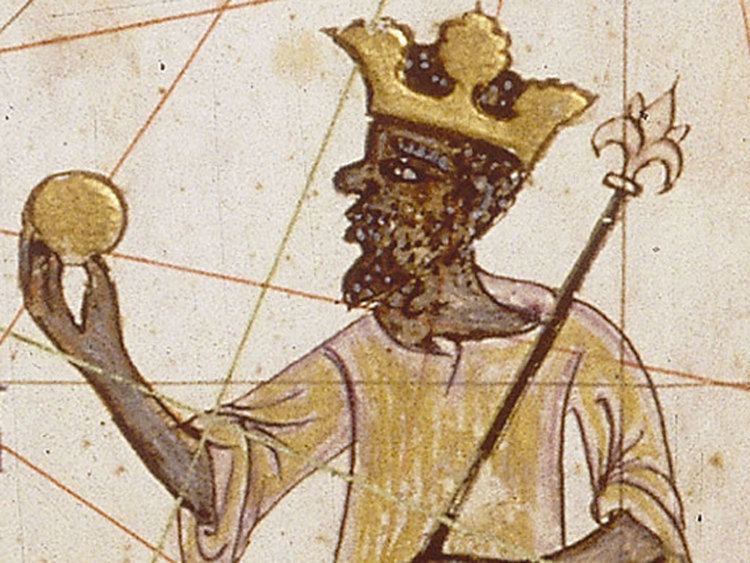
Mansa Musa Keita came to the throne through a practice of appointing a deputy when a king goes on his pilgrimage to Mecca or some other endeavor, and later naming the deputy as heir. According to primary sources, Musa was appointed deputy of Abubakari Keita II, the king before him, who had reportedly embarked on an expedition to explore the limits of the Atlantic Ocean, and never returned. The Arab-Egyptian scholar Al-Umari quotes Mansa Musa as follows:

"The ruler who preceded me did not believe that it was impossible to reach the extremity of the ocean that encircles the earth (the Atlantic Ocean). He wanted to reach that (end) and was determined to pursue his plan. So he equipped two hundred boats full of men, and many others full of gold, water and provisions sufficient for several years. He ordered the captain not to return until they had reached the other end of the ocean, or until he had exhausted the provisions and water. So they set out on their journey. They were absent for a long period, and, at last just one boat returned. When questioned the captain replied: 'O Prince, we navigated for a long period, until we saw in the midst of the ocean a great river which was flowing massively.. My boat was the last one; others were ahead of me, and they were drowned in the great whirlpool and never came out again. I sailed back to escape this current.' But the Sultan would not believe him. He ordered two thousand boats to be equipped for him and his men, and one thousand more for water and provisions. Then he conferred the regency on me for the term of his absence, and departed with his men, never to return nor to give a sign of life."
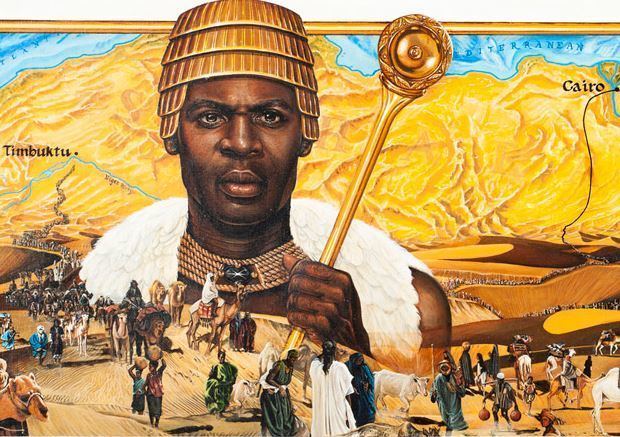
Musa's son and successor, Mansa Magha Keita, was also appointed deputy during Musa's pilgrimage.
Islam and pilgrimage to Mecca

Musa was a devout Muslim, and his pilgrimage to Mecca made him well-known across northern Africa and the Middle East. To Musa, Islam was "an entry into the cultured world of the Eastern Mediterranean". He would spend much time fostering the growth of the religion within his empire.
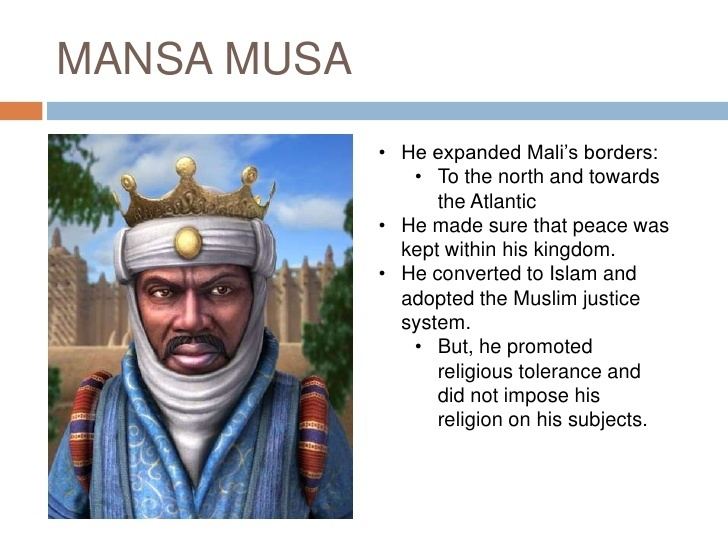
Musa made his pilgrimage between 1324–1325. His procession reportedly included 60,000 men, including 12,000 slaves who each carried 1.8 kg (4 lb) of gold bars and heralds dressed in silks who bore gold staffs, organized horses, and handled bags. Musa provided all necessities for the procession, feeding the entire company of men and animals. Those animals included 80 camels which each carried 23–136 kg (50–300 lb) of gold dust. Musa gave the gold to the poor he met along his route. Musa not only gave to the cities he passed on the way to Mecca, including Cairo and Medina, but also traded gold for souvenirs. It was reported that he built a mosque every Friday.
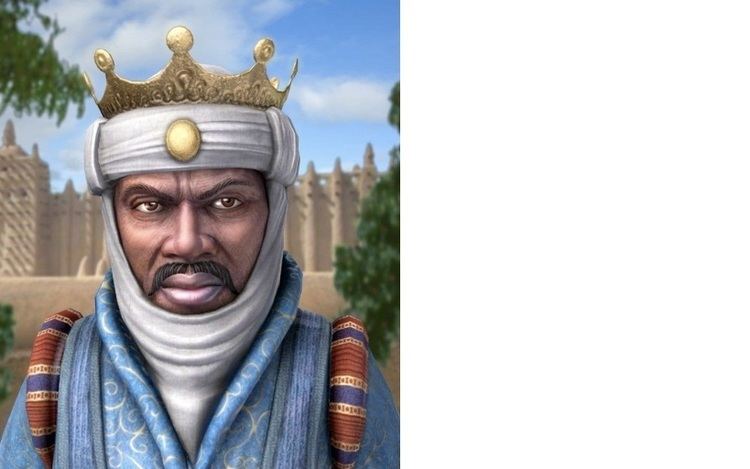
Musa's journey was documented by several eyewitnesses along his route, who were in awe of his wealth and extensive procession, and records exist in a variety of sources, including journals, oral accounts, and histories. Musa is known to have visited the Mamluk sultan of Egypt, Al-Nasir Muhammad, in July 1324.
But Musa's generous actions inadvertently devastated the economy of the regions through which he passed. In the cities of Cairo, Medina, and Mecca, the sudden influx of gold devalued the metal for the next decade. Prices on goods and wares greatly inflated. To rectify the gold market, on his way back from Mecca, Musa borrowed all the gold he could carry from money-lenders in Cairo, at high interest. This is the only time recorded in history that one man directly controlled the price of gold in the Mediterranean.
Later reign
During his long return journey from Mecca in 1325, Musa heard news that his army had recaptured Gao. Sagmandia, one of his generals, led the endeavor. The city of Gao had been within the empire since before Sakura's reign and was an important − though often rebellious − trading center. Musa made a detour and visited the city where he received, as hostages, the two sons of the Gao king, Ali Kolon and Suleiman Nar. He returned to Niani with the two boys and later educated them at his court. When Mansa Musa returned, he brought back many Arabian scholars and architects.
Construction in Mali
Musa embarked on a large building program, raising mosques and madrasas in Timbuktu and Gao. Most notably, the ancient center of learning Sankore Madrasah (or University of Sankore) was constructed during his reign.
In Niani, Musa built the Hall of Audience, a building communicating by an interior door to the royal palace. It was "an admirable Monument", surmounted by a dome and adorned with arabesques of striking colours. The wooden window frames of an upper storey were plated with silver foil; those of a lower storey, with gold. Like the Great Mosque, a contemporaneous and grandiose structure in Timbuktu, the Hall was built of cut stone.
During this period, there was an advanced level of urban living in the major centers of the Mali. Sergio Domian, an Italian scholar of art and architecture, wrote of this period: "Thus was laid the foundation of an urban civilization. At the height of its power, Mali had at least 400 cities, and the interior of the Niger Delta was very densely populated."
Economy and education
It is recorded that Mansa Musa traveled through the cities of Timbuktu and Gao on his way to Mecca, and made them a part of his empire when he returned around 1325. He brought architects from Andalusia, a region in Spain, and Cairo to build his grand palace in Timbuktu and the great Djinguereber Mosque that still stands today.
Timbuktu soon became a center of trade, culture, and Islam; markets brought in merchants from Hausaland, Egypt, and other African kingdoms, a university was founded in the city (as well as in the Malian cities of Djenné and Ségou), and Islam was spread through the markets and university, making Timbuktu a new area for Islamic scholarship. News of the Malian empire's city of wealth even traveled across the Mediterranean to southern Europe, where traders from Venice, Granada, and Genoa soon added Timbuktu to their maps to trade manufactured goods for gold.
The University of Sankore in Timbuktu was restaffed under Musa's reign with jurists, astronomers, and mathematicians. The university became a center of learning and culture, drawing Muslim scholars from around Africa and the Middle East to Timbuktu.
In 1330, the kingdom of Mossi invaded and conquered the city of Timbuktu. Gao had already been captured by Musa's general, and Musa quickly regained Timbuktu and built a rampart and stone fort, and placed a standing army to protect the city from future invaders.
While Musa's palace has since vanished, the university and mosque still stand in Timbuktu today.
By the end of Mansa Musa's reign, the Sankoré University had been converted into a fully staffed University with the largest collections of books in Africa since the Library of Alexandria. The Sankoré University was capable of housing 25,000 students and had one of the largest libraries in the world with roughly 1,000,000 manuscripts.
Death
The death date of Mansa Musa is highly debated among modern historians and the Arab scholars who recorded the history of Mali. When compared to the reigns of his successors, son Mansa Maghan (recorded rule from 1337 to 1341) and older brother Mansa Suleyman (recorded rule from 1341 to 1360), and Musa's recorded 25 years of rule, the calculated date of death is 1337. Other records declare Musa planned to abdicate the throne to his son Maghan, but he died soon after he returned from Mecca in 1325. According to an account by Ibn-Khaldun, Mansa Musa was alive when the city of Tlemcen in Algeria was conquered in 1337, as he sent a representative to Algeria to congratulate the conquerors on their victory.
